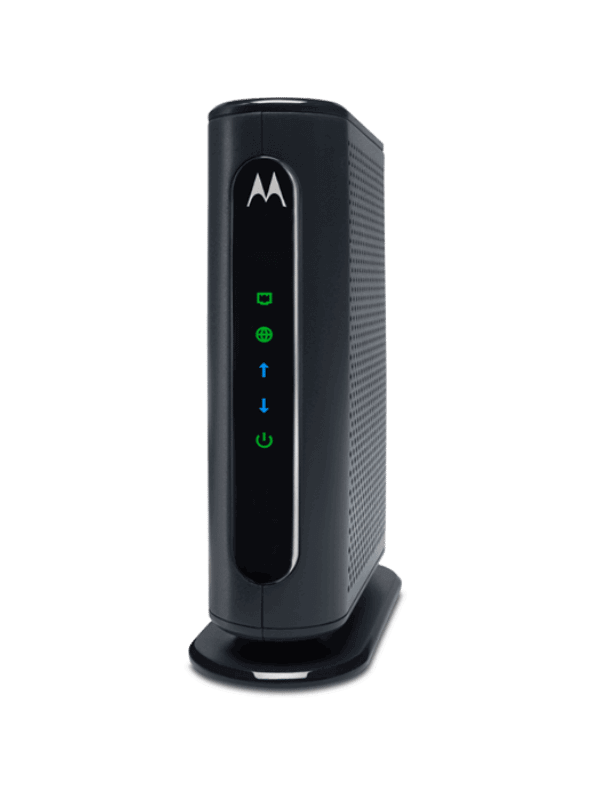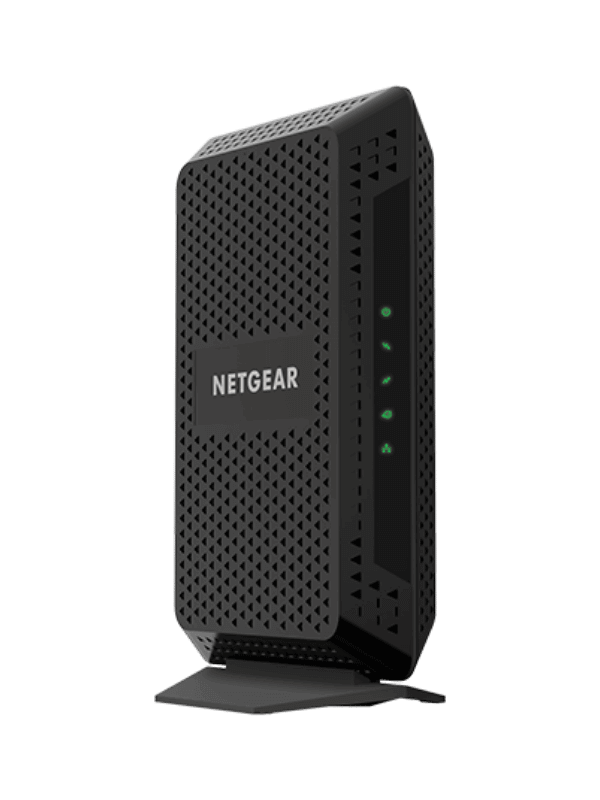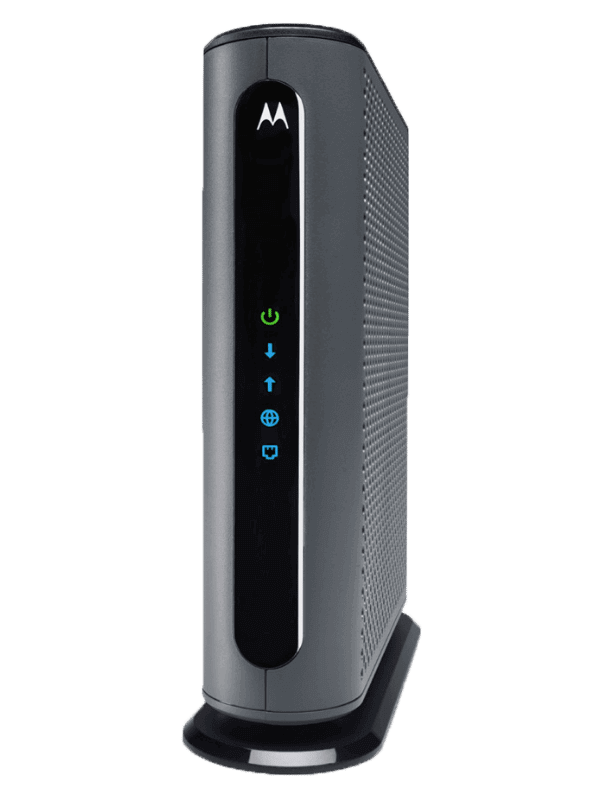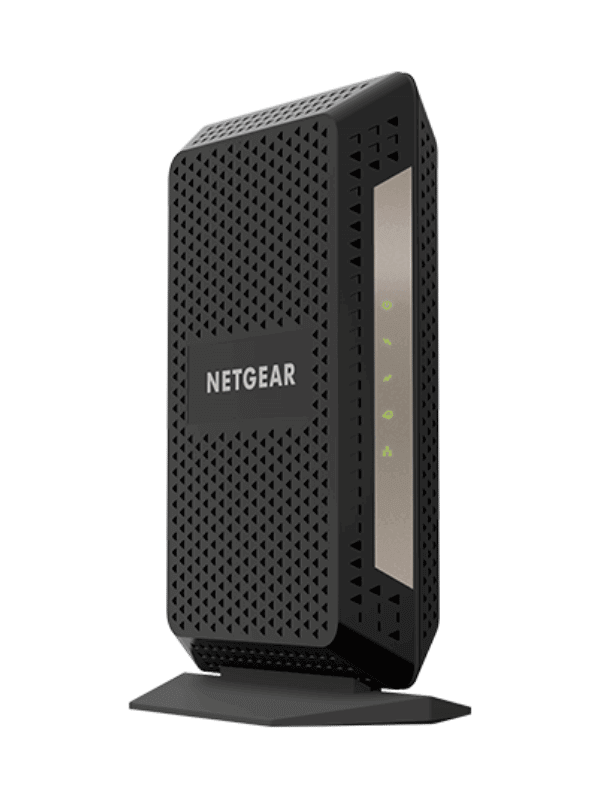At Networks Hardware, we’ve tested several modems, and we can confidently say that the MB7220 is a great low-tier modem.
It is affordable, simple to set up, and perfect for slower Internet plans – less than 150 Mbps.
This means you should pick a different modem if you have a faster Internet plan or think you might upgrade anytime soon.
Motorola MB7220 Overview
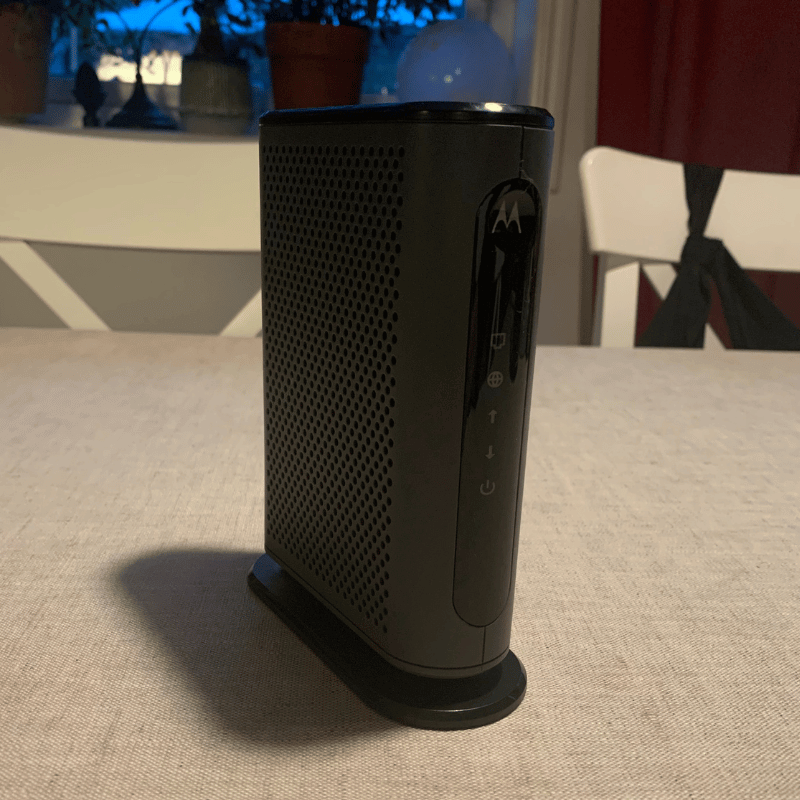
The Motorola MB7220 modem is DOCSIS 3.0, which means the following:
- You will have to use a router with it if you want to connect more than one device to the Internet and have a Wi-Fi network.
- It is only compatible with cable modem providers, but not all.
The MB7220 modem only works with these major ISPs – Cox, Xfinity, Charter Spectrum, Time Warner Cable, and BrightHouse.
If you have Internet plans from these providers, it is a good alternative to renting a modem from the ISP.
One drawback of the MB7220 is that it only supports DOCSIS 3.0 and not DOCSIS 3.1.
DOCSIS 3.0 is okay if you’re Internet plan is 200 Mbps or slower. But if you have faster speeds, DOCSIS 3.1 is the way to go. Read our guide about DOCSIS 3.0 vs. 3.1 to learn more.
However, the MB7220 is much more affordable than a DOCSIS 3.1 modem. So, if your Internet plan is 150 Mbps or less, and you don’t plan to get a faster plan any time soon, you can save money by choosing this modem.
But if you want to future-proof your home network, we suggest a DOCSIS 3.1 modem. Read our guide on the best DOCSIS 3.1 modems for our recommendations.
Specs
| Type | Cable Modem |
| Wi-Fi | No Router |
| Brand | Motorola |
| Model | MB7220 |
| Standards | DOCSIS 3.0 8×4 channels |
| Top WAN speed | 343 Mbps |
| Ports | 1 Gigabit Ethernet LAN Port and 1 Coax Port |
| Top internet plan supported. | 150 Mbps |
| Supported ISP’s | Cox, Xfinity, Charter Spectrum, Time Warner Cable, BrightHouse |
| Not supported ISP’s | AT&T, CenturyLink, Verizon, and other fiber optic, satellite, or DSL services. |
| Weight | 0.58 pounds |
| Dimensions | 4.9 x 2 x 6.1 inches |
| Warranty | 2-year |
If you want to learn more, check out the full datasheet.
Performance 3.0
The MB7220 performance is good for a DOCSIS 3.0 8×4 channels cable modem. Don’t get me wrong– a DOCSIS 3.1 will provide more bandwidth and work better with faster Internet plans.
But if you have an Internet plan of 150 Mbps or less, the MB7220 will give you the networking experience you need. In fact, using a DOCSIS 3.1 modem on any internet plan of less than 300 Mbps would be overkill.
Matching the MB7220 with an Internet plan of 150 Mbps or slower will give you a great home networking experience. Using it with any plan faster than 150 Mbps will slow your performance.
Design 4.4
For the most part, the design of the Motorola MB7220 is good. It is black, sleek, and looks modern.

It is relatively slim and doesn’t take up much shelf or desk space– it has a footprint of 2-inches wide by 4.9-inches deep.
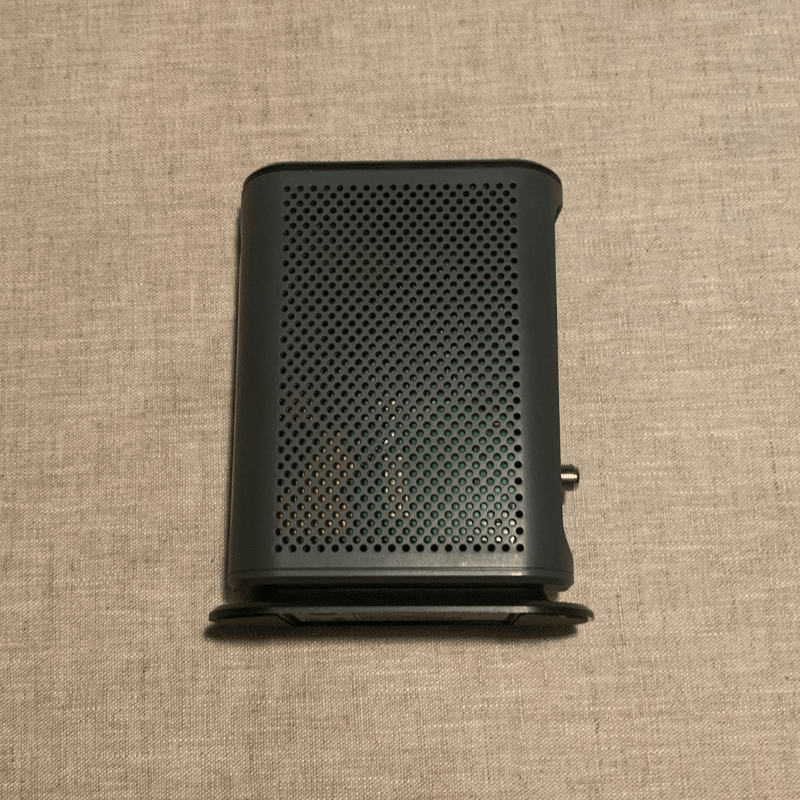
So, even when you pair it with your router, you won’t have to worry about finding a large space to put them.
On the rear side of this basic modem, you’ll find;
- Power button
- Power cable jack
- Reset button
- Gigabit LAN port
- Coax cable connector
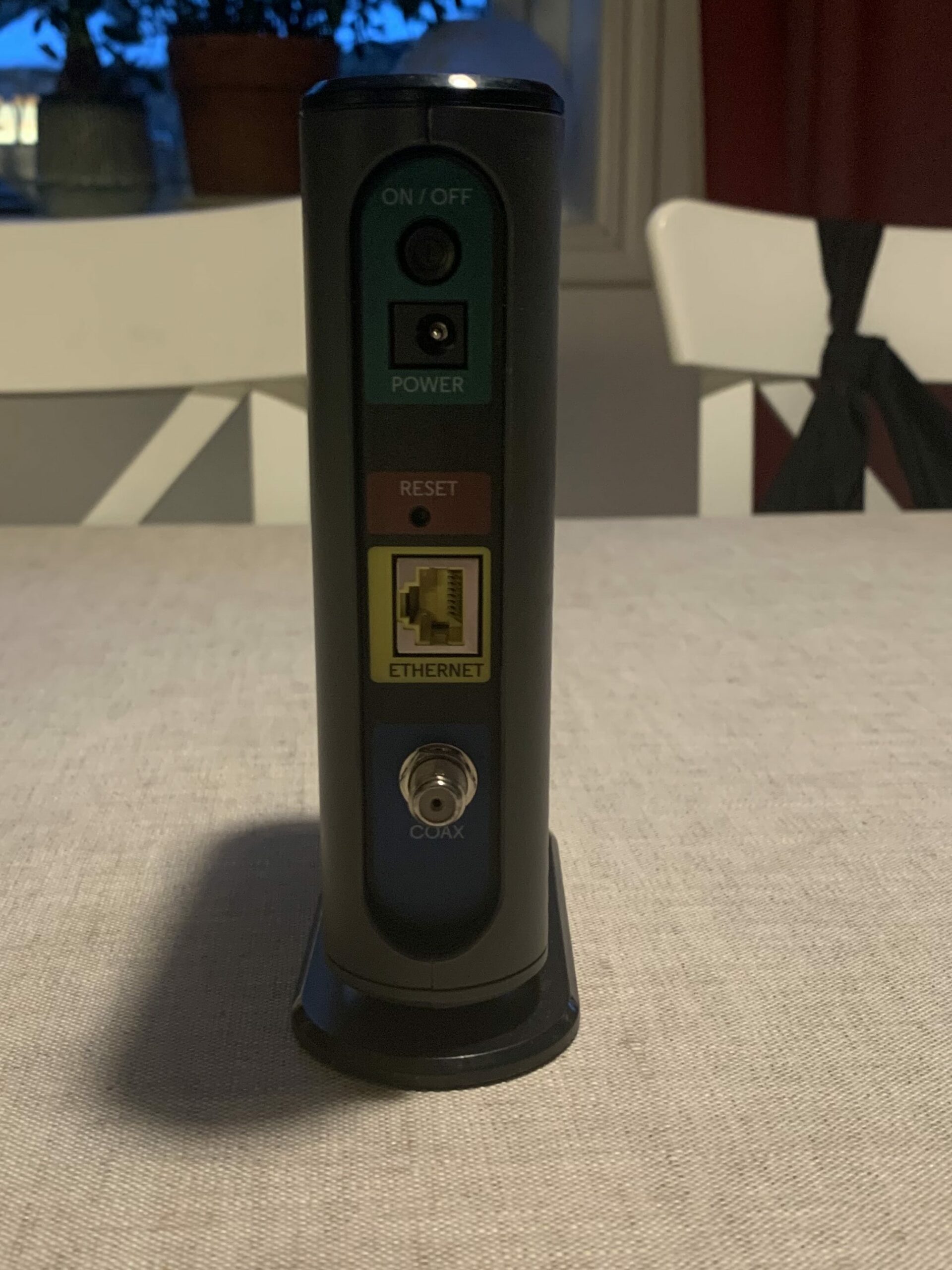
On the front, you’ll see its five indication/status lights. Like most modems, you can use these lights to quickly identify Internet connection, LAN connection, upstream, downstream, and power.
Compatibility 3.5
A significant drawback of the Motorola MB7220 is that it is only compatible with a few major ISPs. So, for it to work, you will need to ensure it’s compatible with your ISP first.
Here are the major ISPs that will for sure work with the MB7220. However, some smaller ISPs might be compatible, even if they’re not on the list.
Approved for
- Cox
- Xfinity (Some areas have removed it)
- Charter Spectrum
- Sparklight
- Suddenlink (and sometimes Optimum, depending on where you live)
Not working on
- AT&T
- CenturyLink
- Verizon
- Fiber optic
- Satellite Internet
- DSL services
Setup 4.8
One area the Motorola MB7220 really excels is with its setup. It is fast and simple– setting it up shouldn’t take you longer than five minutes (assuming you’re using it with a compatible ISP).
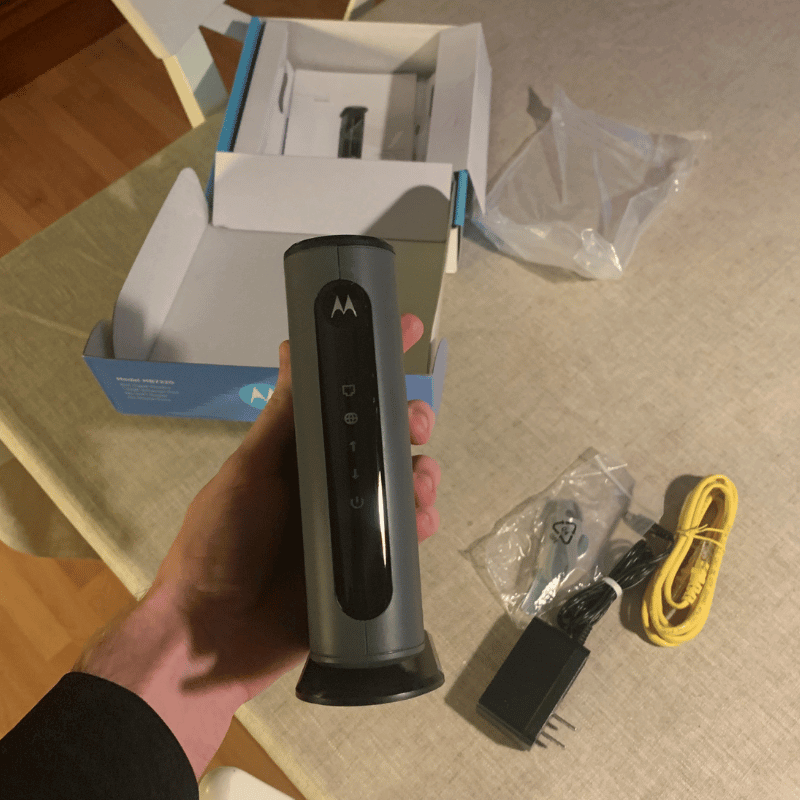
All you have to do is connect the coaxial cable from your ISP to the back of the modem, connect the MB7220 to your router with an Ethernet cable, plug in the power cord to both devices, and you should have Internet within your home in minutes.
You might also need to visit your ISP’s self-activation portal, but it should load automatically once you open a browser.
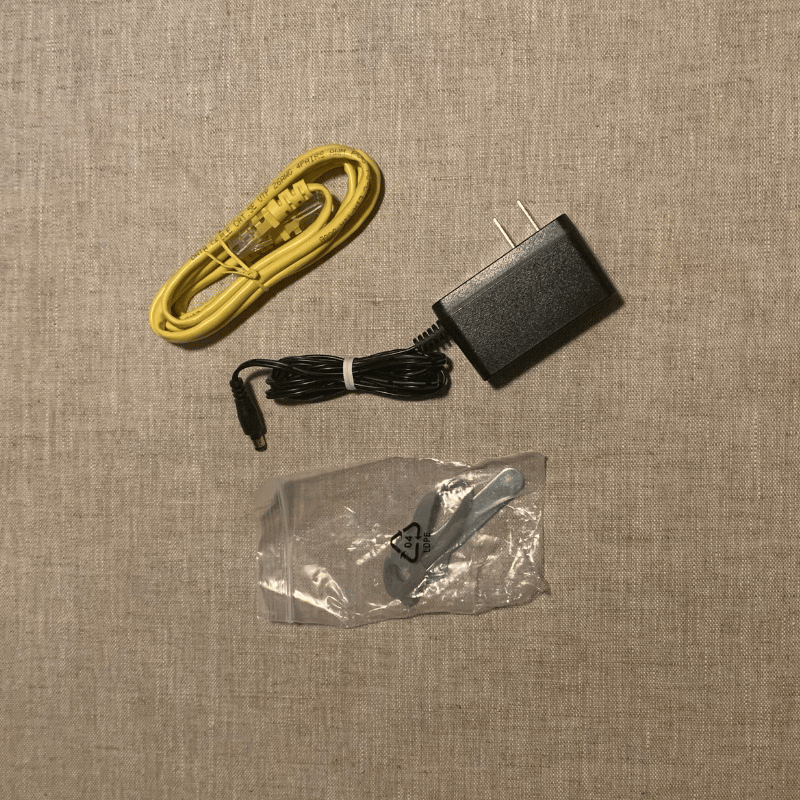
If that doesn’t work, give them a call. They might need to manually activate your coaxial connection.
Once you have everything set up, you can type https://192.168.100.1/ into any web browser to configure your modem’s settings.
Value 4.1
Since the MB7220 is made for slower Internet plans, it does have good value. But it’s not the best.
Yes, it has a very affordable price, but without DOCSIS 3.1, you are severely limiting your network (and not future-proofing it).
However, if your home’s Internet plan is 150 Mbps or less, and you don’t foresee a faster plan becoming available in the next few years, the MB7220 is a great deal.
On the other hand, if your ISP suddenly starts offering 500 Mbps as its fastest plan next year, the MB7220 won’t support that speed.
In that case, you’d have to upgrade to a DOCSIS 3.1 modem.
Reviews of the Motorola MB7220
The Motorola MB7220 has thousands of positive consumer reviews on various online retailer sites.
Most reviews praise its easy setup, fast speeds (for plans less than 150 Mbps), and minimal maintenance.
Some people found issues with it getting too warm and having a non-standard login screen.
For many reviewers, the MB7220 worked fine for several years with no problems. And if something happens to go wrong with yours, Motorola provides a 2-year warranty to cover it.
Alternatives
Here are some excellent alternatives to MB7220.

